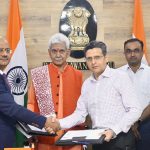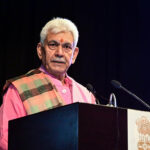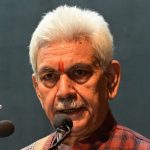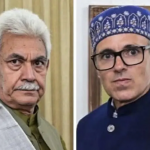In a path breaking announcement by the Minister of State, Dr Jitendra Singh, the Indian Space Research Organization (ISRO) has signed a Space Flight Agreement with Axiom Space as part of a joint mission with the National Aeronautics and Space Administration (NASA), to transport one Gaganyatri (Indian astronaut) to the International Space Station. The Indian Gaganyatri—prime candidate Group Captain Shubhanshu Shukla or reserve candidate Group Captain Prasanth Nair (both from the Indian Air Force)—will pilot the mission, which is now designated as Axiom Mission 4 (AM4) and is scheduled for launch in October 2024. The spacecraft commander is the former Chief of the US Astronaut Office, Peggy Whitson, who, at present, is the world’s longest space-residing astronaut. The mission would be joined by two non-career astronauts from Poland and Hungary. AM4 is among the crucial precursor missions for Axiom Space as it prepares to launch three modules of its space station in the next five years—the first module branching from the existing ISS structure. In the long run, Axiom Space intends to raise and operate a commercial space station. Since the announcement of India’s human spaceflight programme, and in particular, the Gaganyaan mission in 2018, ISRO has received cooperation on space medicine from the French space agency, CNES, and spaceflight training by the Russian Roscosmos. The US was conspicuously absent on these matters despite an active India-US Joint Working Group on Civil Space Cooperation, established in 2005. The Working Group tremendously helped the Indian Chandrayaan missions, but it had no human spaceflight component. Later, in 2014, after the near-simultaneous launch of ISRO’s Mars Orbiter Mission and NASA’s Maven spacecraft to Mars, both ISRO and NASA established the Mars Working Group, but no human spaceflight component was attached. The missing element of the bilateral space cooperation demanded convergence of political visions that are beyond the remit of national space agencies. That role was best suited for the National Security Advisor position in both nations. As is evident from the bilateral space cooperation, human spaceflight requires the convergence of talents from civilian space and scientific agencies, defence establishments, and commercial entities. Space agencies do not have powers vested in them to bring these cohorts together. In the US, it is the National Space Council within the Executive Office of the President of the United States that has this converging ability. In India, it is the Space Commission within the Prime Minister’s Office that has the ability. And in both these bodies, the professional position with the convening power is that of the National Security Advisor. To that end, the NSA-led US-India initiative on Critical and Emerging Technology (iCET), established in May 2022, gave tremendous emphasis on human spaceflight, commercial lunar exploration, and commercial space partnerships, something that was not possible within the ambits of their civil space cooperation framework. Given the natural affinity between India and the US tech ecosystems, it is natural for the bilateral to proceed exceedingly well compared to any of India’s space cooperation bilaterals. However, in the long run, India will have to chart its course when it comes to making the domestic commercial space ecosystem globally competitive. When it comes to the space sector, the US is a resource magnet, attracting talent and investments. The case in point is the Indian company Axiom Research Labs (ARL) or Team Indus. It participated in the 2010 Google Lunar X Prize contest and was among the finalists selected in this contest to launch its in-house built lander and rover. Despite its success, ARL did not find much traction for its futuristic services in India prior to 2018. But the US ecosystem found it useful and ARL moved its attention to the NASA Commercial Lunar Payload Services (CLPS) programme that contracts companies partaking in the development of payloads assisting exploration of the lunar South Pole, extraction of resources, and developing technologies necessitated for long-duration lunar habitation. On different occasions, it partnered with American companies OrbitBeyond and Ceres Robotics, both interested in CLPS and intending to share its expertise and intellectual property. India’s lunar exploration programme was too nascent to then accommodate ARL’s commercial services. Likewise, the US has created the Artemis Program for the same purpose of attracting financial, human resource, and technological resources that its partner countries generate. China thinks the same when it attracts international partners to side with its International Lunar Resource Station megaproject. The unhealthiness comes from the inability of Indian private players to undergo the experiential learning that happens when they work with space ecosystems of various countries. This experience with multiple players is extremely crucial from the standpoint of strategic autonomy. India’s human spaceflight diplomacy, at a space agency level, is not one-sided. It has engagements with Paris through the India-France Strategic Space Dialogue and Moscow through the India-Russia Special and Privileged Strategic Partnership. As India proceeds with the R&D of the Bharatiya Antariksh Station (BAS), it will definitely have to avail commercial space partnerships with entities emerging from countries across geopolitical blocs. Just like AM4 is carrying Hungarian and Polish astronauts, India will also have to bring astronauts and the commercial ecosystems of their countries to its BAS fold. India’s human spaceflight diplomacy, at a space agency level, is not one-sided. It has engagements with Paris through the India-France Strategic Space Dialogue and Moscow through the India-Russia Special and Privileged Strategic Partnership. As India proceeds with the R&D of the Bharatiya Antariksh Station (BAS), it will definitely have to avail commercial space partnerships with entities emerging from countries across geopolitical blocs. Just like AM4 is carrying Hungarian and Polish astronauts, India will also have to bring astronauts and the commercial ecosystems of their countries to its BAS fold.
Search
Archives
- August 2025
- July 2025
- June 2025
- May 2025
- April 2025
- March 2025
- February 2025
- January 2025
- December 2024
- November 2024
- October 2024
- September 2024
- August 2024
- July 2024
- June 2024
- May 2024
- April 2024
- March 2024
- February 2024
- January 2024
- December 2023
- November 2023
- October 2023
- September 2023
- August 2023
- July 2023
- June 2023
- May 2023
- April 2023
- March 2023
- February 2023
- January 2023
- December 2022
- November 2022
- October 2022
- September 2022
- August 2022
- July 2022
- June 2022
- May 2022
© 2022 Foxiz News Network. Ruby Design Company. All Rights Reserved.










